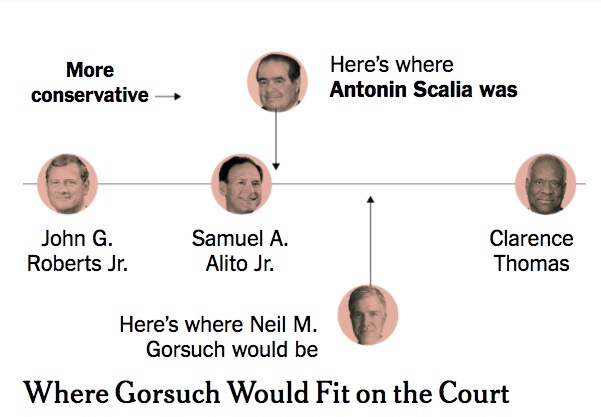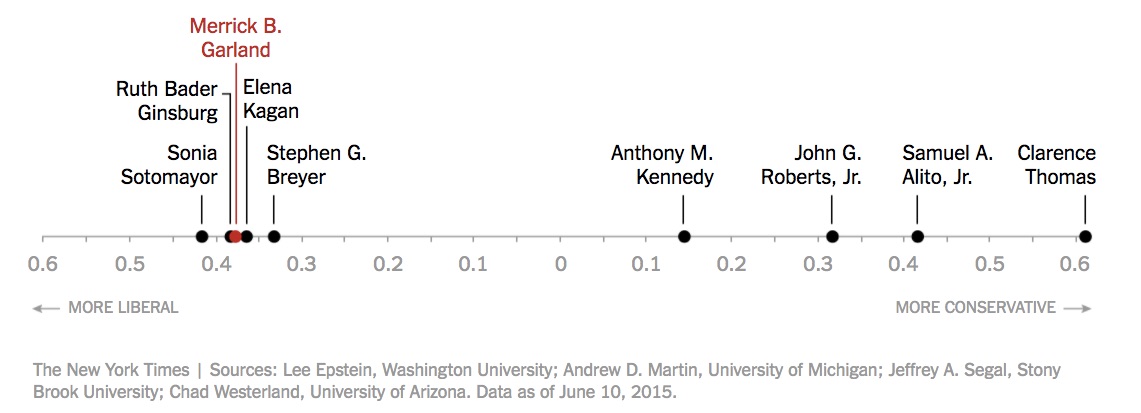Jonathan Tobin‘s National Review Online column offers a better assessment of the Neil Gorsuch nomination than the New York Times offers. You’re shocked, I know.
It didn’t matter that Judge Neil Gorsuch was a highly respected jurist or that his stature as a leading conservative intellectual legal thinker made him a natural successor to the late Justice Antonin Scalia. The growing number of Democrats who are determined to not so much oppose the Trump presidency as “resist” it wasted no time blasting Gorsuch as “anti-woman” and a tool of the corporate class. In doing so, the party base made it clear to Senate Democrats that nothing less than a battle to the death to stop his nomination would be considered acceptable. But in case there was any doubt about the duty of Democrats to oppose Gorsuch in spite of his impressive qualifications, it was removed by the graphic and accompanying article that the Times placed at the top of its home page almost as soon as President Trump announced the nomination.

But Times readers with long memories should recall a similar chart published last March after President Obama nominated Judge Merrick Garland for the same seat.
Obama and his reliable cheering section in the mainstream media touted Garland as a centrist pick rather than a doctrinaire liberal. That talking point served as an effective stick with which to beat the Republicans who refused to consider his nomination because of the unprecedented nature of the president’s demand that a Senate controlled by the opposition party should allow a president to alter the ideological balance of the court during an election year. But the claim that Garland was a centrist was debunked almost immediately by the same liberal flagship of the mainstream media that has labeled Gorsuch as being to the right of Scalia.

The chart published by the Times on March 16, 2016, demonstrated that Garland was to the left of two of the court’s current liberals — Stephen G. Breyer and Elena Kagan — and a virtual match for Ruth Bader Ginsburg, leaving only Sonia Sotomayor slightly to the left of him. As the Times helpfully pointed out, Garland’s presence on the high court would have helped “shift the court to be more liberal.” This painfully obvious observation was studiously ignored by the paper’s editorial column over the following months as it continued to argue that Obama’s nominee was a neutral choice that Republicans should confirm.
That Garland was no moderate but, in fact, a doctrinaire liberal was not something the same newspaper chose to recall today as it sought to lead the charge against Gorsuch as an extremist.


